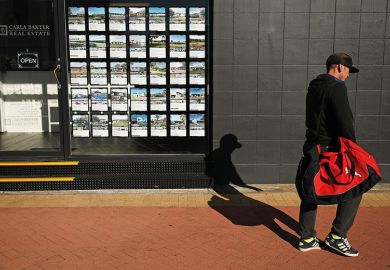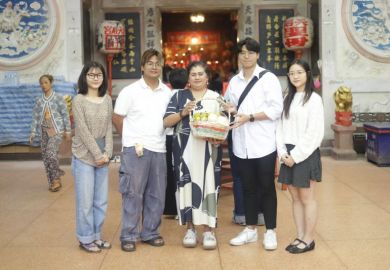Eligibility rules for welfare benefits are increasing the risk of disadvantaged students being forced out of university or never being admitted in the first place, an Australian conference has heard.
Leanne Holt, pro vice-chancellor for indigenous strategy at Macquarie University, said Aboriginal students were enrolling in too many subjects in order to qualify for Abstudy living allowances.
Indigenous undergraduates can receive Abstudy benefits of up to A$745 (£405) a fortnight, and in some cases more, to help cover their living expenses. They can also access extra payments to help manage incidental costs, rent and financial stress, as well as twice-yearly “start-up” loans of A$1,200 each.
But to qualify for any of these benefits they must undertake at least 75 per cent of a full-time study load, usually regarded as four subjects per semester.
Dr Holt said this put indigenous students in a quandary. “The attrition rates in the first year are the highest,” she told the Student Equity Forum at the University of Technology Sydney (UTS). “We have found…that students are picking three units so that they can get their Abstudy, but only attempting two units.”
This put them at risk of losing their university places under the “fail rule” introduced in 2021. It renders undergraduates ineligible for government subsidies if they do not successfully complete at least half their subjects.
Dr Holt said that in indigenous students’ eyes, the “value” of receiving Abstudy outweighed the risk of failing and losing access to subsidised university places. She said the processes at Centrelink, the federal agency that manages social security payments, needed to “align to our students’ needs”.
Student living expenses are increasingly worrying university administrators as Australia’s inflation rate hovers around 7 per cent. While the rolling monthly average dipped to 6.8 per cent in February – the lowest figure since the monthly measure was introduced six months ago – costs of student staples such as housing and food are rising at almost 10 per cent a year.
UTS pro vice-chancellor Verity Firth said the “biggest barrier” facing disadvantaged students was their need to work “multiple jobs” just to get by. “[They] simply don’t have the same amount of time as other students to devote to their studies.”
Kylie Austin, associate director for student equity and success at the University of Wollongong, said the queues at university pantries were longer than ever. “We’ve never seen anything like it,” she told the forum. “I don’t think we need any data to tell us that our students are probably the most financially constrained that they’ve ever been.”
Equity consultant Nadine Zacharias said average success rates for disadvantaged Victorian students had risen by two percentage points in 2020, as the state experienced Covid lockdowns and social security payments were temporarily doubled.
“The combination of getting double the money and being locked down did wonders for people’s ability to stay [put] and do well in their study,” she told the forum.
Dr Zacharias said income support eligibility rules sometimes operated at cross purposes with policies to boost university participation.
She said the requirement for many students to work at least 18 months to qualify for Youth Allowance, the income support scheme for non-indigenous students aged under 25, was a “barrier” for regional people planning to study in the city. “[It] puts a bit of a break on that decision and that momentum.”
Register to continue
Why register?
- Registration is free and only takes a moment
- Once registered, you can read 3 articles a month
- Sign up for our newsletter
Subscribe
Or subscribe for unlimited access to:
- Unlimited access to news, views, insights & reviews
- Digital editions
- Digital access to THE’s university and college rankings analysis
Already registered or a current subscriber?










